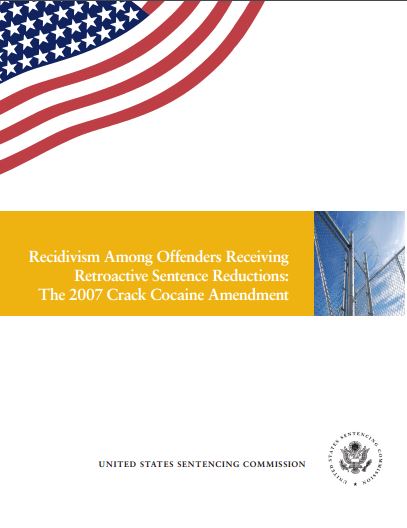Summary
This publication reports on recidivism of crack cocaine offenders who were released immediately before and after implementation of the 2007 Crack Cocaine Amendment, and followed in the community for five years. In order to study the impact of retroactive sentence reduction on recidivism rates, staff analyzed the recidivism rate for a group of crack cocaine offenders whose sentences were reduced pursuant to retroactive application of the 2007 Crack Cocaine Amendment. Staff then compared that rate to the recidivism rate for a comparison group of offenders who would have been eligible to seek a reduced sentence under the 2007 Crack Cocaine Amendment, but were released before the effective date of that amendment after serving their full prison terms less good time and other earned credits. (Published May 2014)
Key Findings
The question addressed by this study is: “Were offenders who received a reduced sentence retroactively under the 2007 Crack Cocaine Amendment more likely to recidivate than similarly situated offenders who did not receive a reduced sentence?”
As discussed more fully in the report, there is no evidence that offenders whose sentence lengths were reduced pursuant to retroactive application of the 2007 Crack Cocaine Amendment had higher recidivism rates than a comparison group of crack cocaine offenders who were released before the effective date of the 2007 Crack Cocaine Amendment and who served their full prison terms less earned credits.

